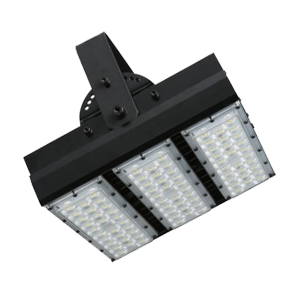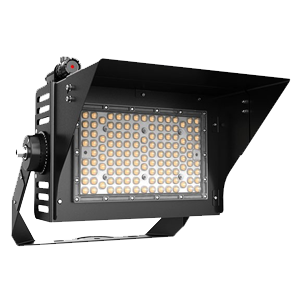The size of the global semiconductor market increased by 23% year-on-year, and the third-generation semiconductor sector rose by nearly 5% to a new high
2021-11-30
Since the second half of 2020, the chip shortage has become the main theme of the semiconductor industry, and the chip shortage has affected industries including automobiles, mobile phones, game consoles, and PCS. In 2021, the biggest nightmare of the global car manufacturers is the lack of core production, although the passenger car market has begun to recover, but the car chip IDM and design factory in the third quarter of 2020 has long been unable to seize production capacity, but also make the car enterprise frequency is difficult to deliver.
In fact, from recent reports such as various institutional securities brokerages, it can also be seen that the year-on-year growth rate of automotive semiconductors is significantly higher than that of other categories. According to research by the Boston Consulting Group, it is estimated that the global demand for nearly 10 million vehicles in 2021 cannot be met due to the lack of core production, and it is estimated that the demand for 7-8 million vehicles will be deferred to 2022, which is equivalent to contributing nearly 10 points of growth next year. Driven by the double increase in shipments and average selling prices, the size of the global semiconductor market this year will increase by 23% year-on-year; In terms of manufacturers, AMD, Mediatek, Nvidia and Qualcomm, the four major fabless manufacturers, the growth rate of sales this year will be the highest, and sales are expected to increase by 65%, 60%, 54% and 51%, respectively.
The third generation semiconductor national creation Hunan Center was inaugurated
The semiconductor industry is the foundation of the modern electronic information industry and an important industry supporting the high-quality development of the national economy. With the rapid rise of "intelligent manufacturing in China", the demand for industrial automation, digitalization and intelligent transformation continues to grow, and industrial software has become an indispensable part of the production and manufacturing link. At present, the road of domestic substitution is gradually clear, and for the semiconductor industry, how to build a complete ecological chain and industrial chain has become the key.
On November 19, the unveiling ceremony of the National third-generation Semiconductor Technology Innovation Center (Hunan) was launched in Changsha, Hunan Province. On the same day, a number of co-construction units of the center signed the "Guochuang Hunan Center Co-construction Agreement", which intends to closely follow the major national strategies and regional science and technology needs, focus on common technologies and major bottlenecks, break through core technologies, and support the third generation semiconductor industry to move towards the middle and high-end. According to the plan, by 2025, the National innovation Center (Hunan) plans to drive Hunan's third-generation semiconductor industry with an annual output value of 10 billion yuan, and establish and improve a complete set of standards for domestic equipment design, manufacturing and verification. By 2030, it is planned to drive the annual output value of Hunan's third-generation semiconductor industry to 100 billion yuan, and achieve positive equipment design, core technology independence, equipment process integration, and intelligent manufacturing process.
It is worth noting that the pulling role of electric vehicles on semiconductors is currently receiving more and more attention from the market, and the accelerated penetration of electric intelligent vehicles will become the core driving force for the rapid growth of the automotive semiconductor industry. At present, the driving role of new energy vehicles for semiconductors is mainly reflected in the fields of power semiconductors and passive components.
1. Assuming that the global passenger car market grows by 1% per year and new energy vehicles account for 25% of the global passenger car market in 2025, it is expected that by 2025, the new energy vehicle market will add nearly 10.778 billion yuan of film capacitor demand.
2, in new energy vehicles, the value of power semiconductors has increased significantly, of which IGBT accounts for about 37% of the cost of new energy vehicle electronic control system, and is the core electronic device of the electronic control system. The demand side benefits from the outbreak of new energy vehicles, and automotive semiconductors may be the semiconductor segment industry with the highest prosperity in the future. According to McKinsey, the domestic automotive semiconductor industry is expected to reach $18 billion in 2025, and the market will reach $29 billion by 2030.
In addition, BYD Chairman Wang Chuanfu also said recently that in the field of semiconductors, the demand for semiconductors in electric vehicles increased by 5-10 times compared to the demand for semiconductors in traditional cars. Wang Chuanfu predicted that the sales volume of new energy vehicles in the Chinese market is expected to break 3.3 million units this year, and the penetration rate of new energy vehicles in China will exceed 35% by the end of next year.
Chip shortage continues Semiconductor sector continues to rally
Affected by the new coronavirus epidemic, the impact of the semiconductor supply chain crisis is becoming increasingly serious. Recently, industry sources said that Toshiba will increase some products in 2022, and accompanied by an English price hike letter. The price hike letter shows that on November 16, Toshiba told customers that the optocoupler will officially increase prices in January 2022. In addition, according to Taiwan media reports, the world's well-known wafer foundry enterprise United Electric will continue to increase the chip foundry price by about 10% in the first quarter of next year, and the new offer will be applicable to the orders of its top three customers. With the increase of raw materials, wafers, sealing, logistics, manpower and other costs, other wafer foundries such as LIJAC, GF, and World Advanced wafer foundry companies have recently notified customers that they will increase wafer foundry prices again in the first quarter of 2022, an increase of about 8%-10%, and some popular processes will increase by more than 10%.
From the current trend of continued price increases in wafer foundries, the current global supply of chips is still in short supply, and now most wafer foundries even next year's production capacity has been rounded, and the current chip shortage continues. According to overseas industry information, the chip shortage situation will continue at least until the second half of 2022, followed by the semiconductor sector is also mushrooming, South Korea strongly supports semiconductors and batteries, Japan to invest in factories, Intel to help Qualcomm foundry and so on.
Sinofin Securities research report said that in recent years, the penetration rate of electric vehicles has continued to increase, but the automotive semiconductor gap is still expanding, and it is expected that in the next 15 years, the compound growth rate of the global automotive semiconductor market in 2020-2035 May exceed 20%(1-2% CAGR from the growth of the global car market, 9-11% CAGR from the growth of the number of chips per vehicle). The 8-10% CAGR will come from an increase in the average unit price of chips), far exceeding the 5-6% compound growth rate of the global semiconductor market over the same time period, with the value of semiconductors per vehicle surging 10-fold from $268 in 2020 to $2,758 in 2035. Among them, SiC silicon carbide chips for vehicles can improve energy efficiency and improve battery life compared with silicon solutions, reduce the cost of battery capacity per unit of the same mileage, or will replace IGBT silicon-based power devices in 2025. According to IHSMarkit data, driven by the huge demand for new energy vehicles and power equipment and other fields, the market size of silicon carbide power devices is expected to exceed $10 billion by 2027. The automotive semiconductor market space is huge, and the focus of strong application companies include Nvidia's taxi self-driving chip system, Tesla's passenger car self-driving chip system, Lumentum's lidar light source, and so on.
In the secondary market, the semiconductor plate once again refreshed the previous high. On November 22, the semiconductor and component sector continued to rise, of which the third-generation semiconductor sector index rose nearly 5%, following a record high. In terms of individual stocks, Yangjie Technology (300373.CN), Jucan Optoelectronics (300708.CN), Zuojiang Technology (300799.CN) rose 20%, Galaxy Micro electricity (688689.CN) rose about 19%, Changchuan Technology (300604.CN) rose more than 15%, Jiejie Micro (300623.CN), Taiji shares (300046.CN), Yingtang Wisdom Control (300131.CN) rose more than 10%, Jingfang Technology (603005.CN), Deye shares (605117.CN) and other daily limits, Tiantong shares (600330cn), Perry shares (300831.CN) and other large gains.
// Source: Network









